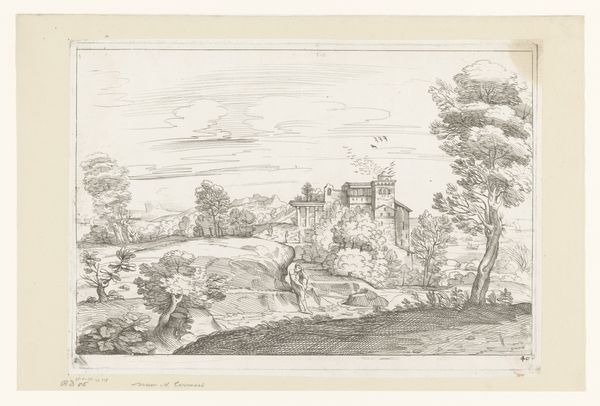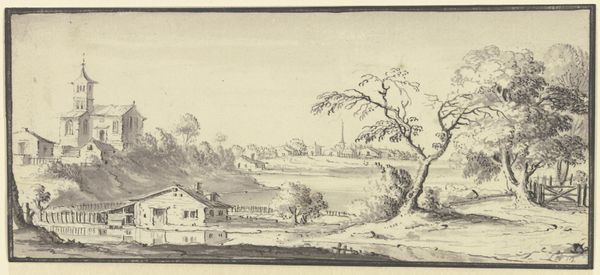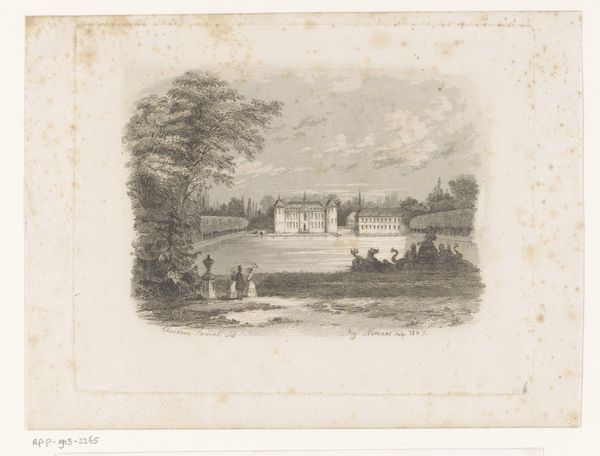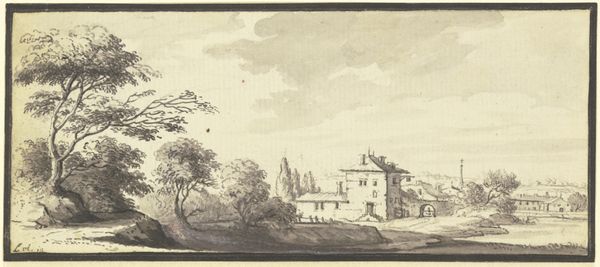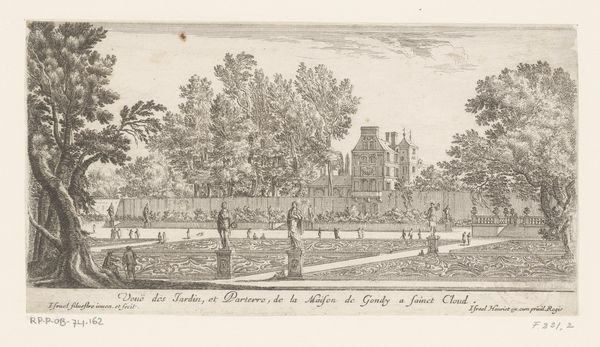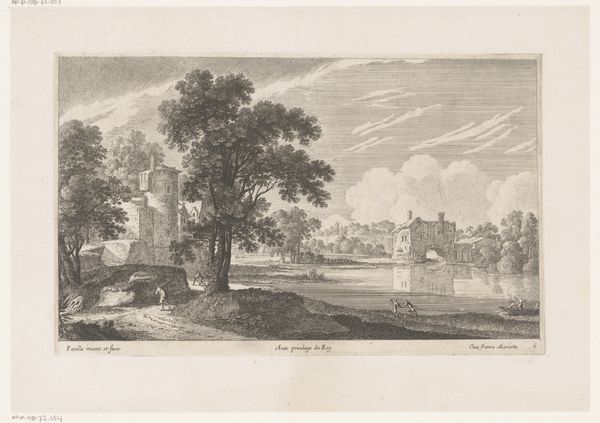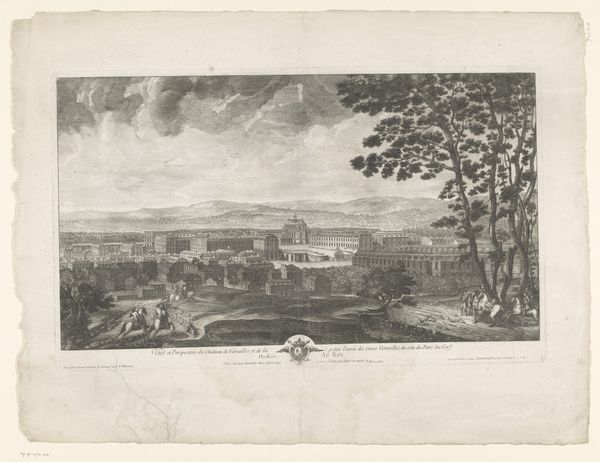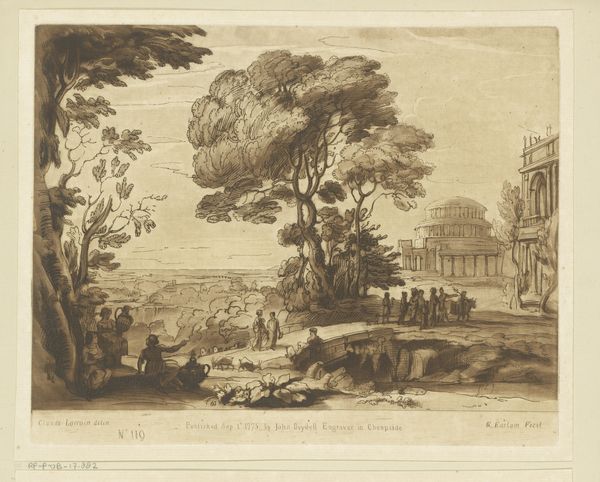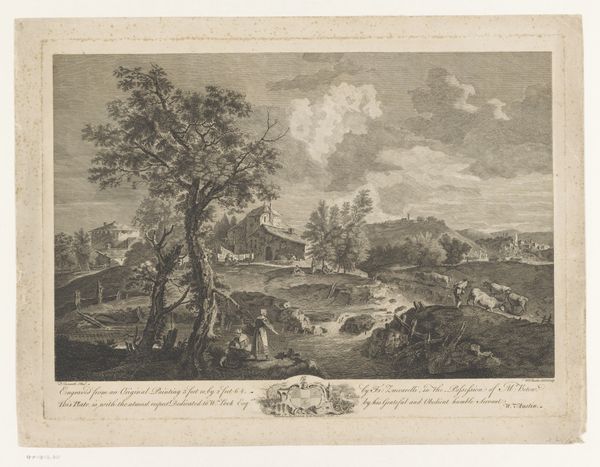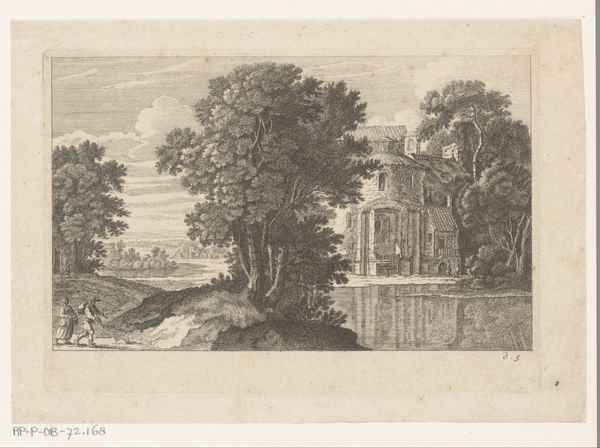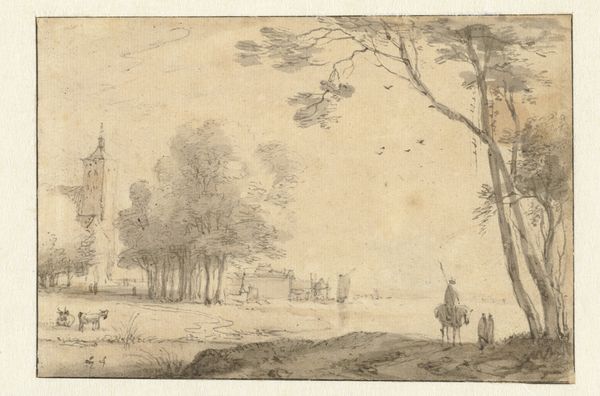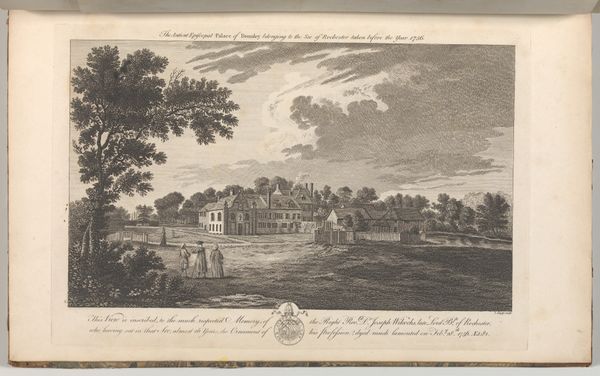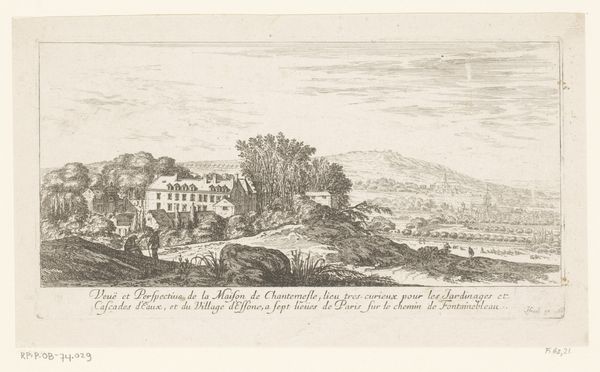
print, etching, engraving
#
baroque
# print
#
etching
#
landscape
#
etching
#
cityscape
#
history-painting
#
engraving
Dimensions: 224 mm (height) x 344 mm (width) (plademaal)
Poul Isac Grønvold created this print of Koldinghus using etching, a printmaking technique that democratized image-making in the 18th century. In etching, a metal plate is coated with a waxy ground. The artist then scratches an image into the ground, exposing the metal. When the plate is dipped in acid, the exposed lines are eaten away, creating grooves. Ink is applied, then the surface is wiped clean, leaving ink only in the etched lines. Finally, the plate is pressed onto paper, transferring the image. The linear quality of etching lends itself to detailed depictions, evident here in the landscape and architecture. The print also shows a kind of production, as the figures on horseback suggest an economy centered around military power and transport networks. The level of detail and precision required for this technique speaks to skilled labor. While prints like these could be made in multiples, each one still depended on significant handcraft. This tension between craft and industry is characteristic of the period.
Comments
No comments
Be the first to comment and join the conversation on the ultimate creative platform.
